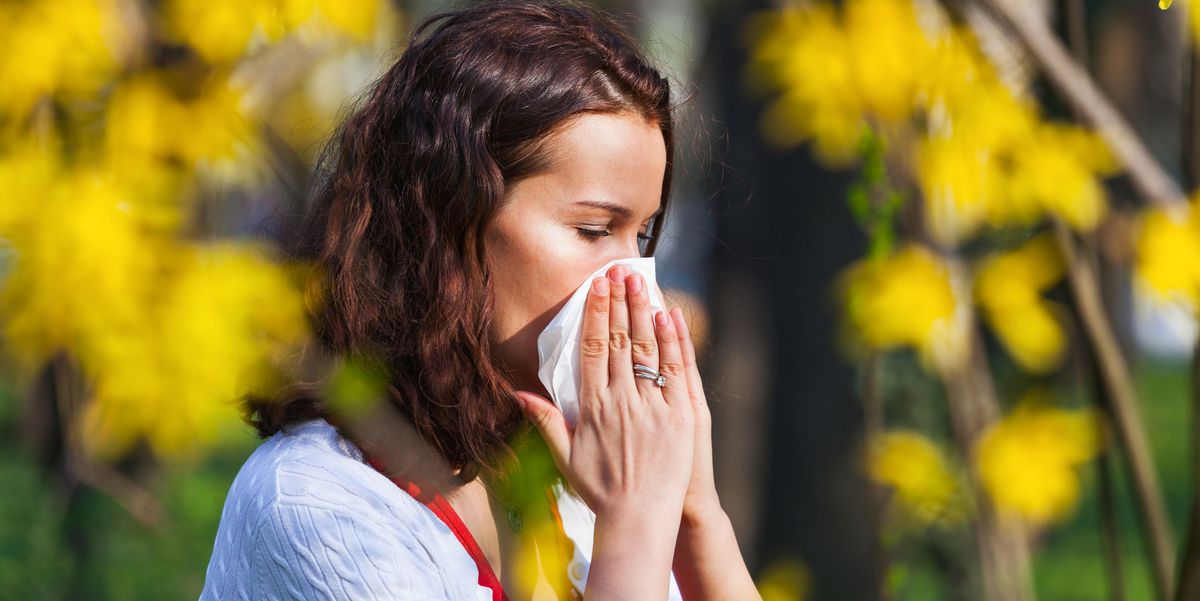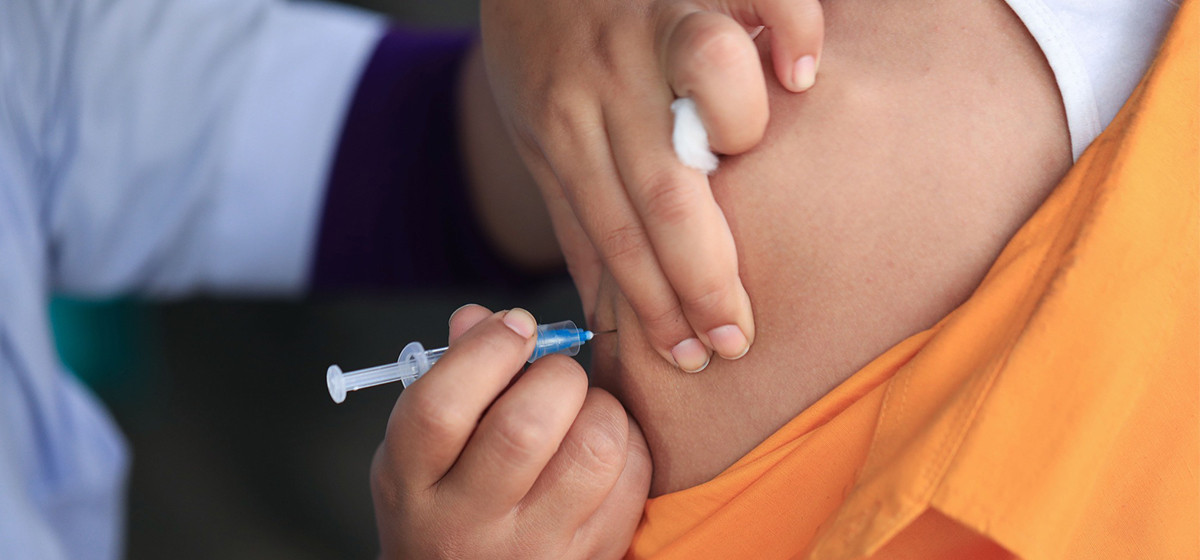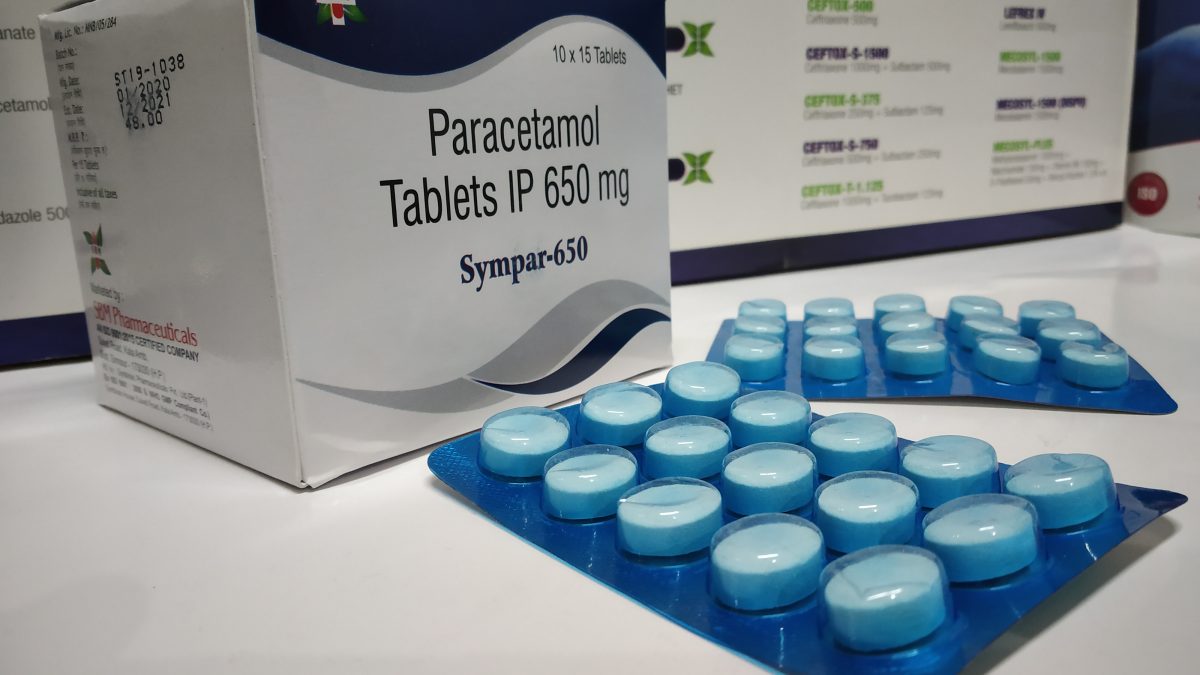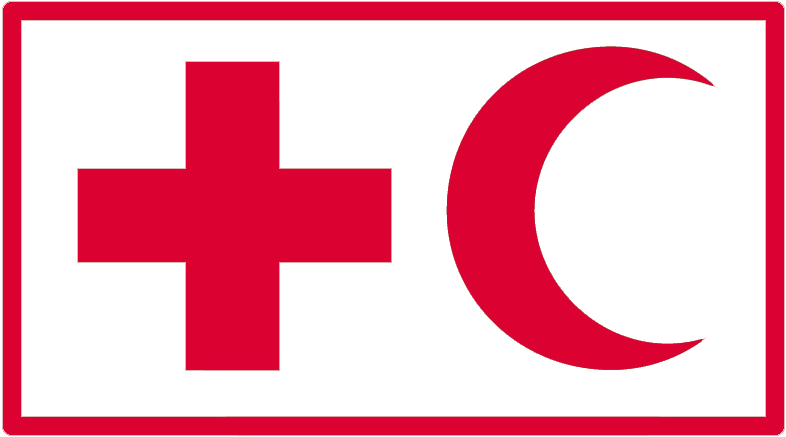How to tame your spring allergies?
Reduce the impact of seasonal sniffles by starting your medications ahead of time.

KATHMANDU: Runny nose, itchy eyes, brain-rattling sneezes … must be spring! In many parts of the U.S., spring allergy season begins in February and can last until early summer.
Allergy and clinical immunology specialists Frank Eidelman, MD, and DeVon Preston, MD, explain what can make spring allergies so brutal — and how you can manage all that sneezing, wheezing, itching and sniffling.
Why your allergies are so bad in the spring
Allergic rhinitis (hay fever) and nasal allergies can significantly affect your quality of life. In fact, the American College of Allergy, Asthma and Immunology reports that allergies are the sixth leading cause of chronic illness in the United States.
“They can really make you miserable. Your eyes get itchy and swollen, your nose is congested, you sneeze a lot and your lungs can become irritated,” Dr. Eidelman says. “And further along the spectrum, the severity can become disabling. You can’t get out of bed, you can’t sleep, you can’t focus on your work — it can be intense.”
Dr. Preston and Dr. Eidelman share why spring allergies in particular can be so debilitating:
Everything’s in bloom. “When we talk about spring allergies, we’re talking about tree pollen,” Dr. Eidelman notes. Trees are, of course, blooming in the spring, which means people with tree pollen allergies are especially miserable this time of year.
Your geography matters. Temperate climates see three basic pollen seasons: spring (tree pollen), summer (grass pollen) and fall (weed pollen and mold). But it’s not unusual for those seasons to overlap. That’s a double whammy for folks who are allergic to both tree and grass pollens, according to Dr. Preston. Meanwhile, in subtropical areas, pollen season can be much longer — and without winter weather or frost to stop trees and plants from producing pollen, allergy seasons don’t end.
Weather is a factor. Sometimes, winter rolls gently into spring. Sometimes … it doesn’t. Have you ever noticed that large temperature swings tend to make you feel like hot garbage? Dr. Preston explains, “When you don’t have consistent temperatures, pollination halts and restarts. So, a lot of allergens compound on each other.” Moisture also plays a role. “When we have drier or windier weather, all the allergens are being carried around,” he adds.
Blame climate change, too. If you feel like your spring allergies have gotten worse, you’re not imagining it. “With climate change, spring pollination has gotten worse in the last 10 to 20 years,” Dr. Eidelman notes. “As the seasons get hotter, we’re seeing more pollen, longer and more intense pollination seasons. This seems to be a worldwide trend.”
Spring allergy symptoms
Some of the most common symptoms of spring allergies are:
- Head congestion. Think stuffy or runny nose, sinus pain and headaches.
- Coughing and — in people with allergic asthma — wheezing or shortness of breath.
- Red, itchy, swollen or watery eyes.
- Dry, scratchy or sore throat with postnasal drip. You may even experience pain when you swallow.
- Itchy skin. If you come into direct contact with an allergen, you could even experience contact dermatitis, which can manifest as an itchy rash, blisters or swelling.
- Fatigue and brain fog.
Are spring allergy symptoms unique?
You may be wondering: Is there something qualitatively different about spring allergy symptoms that makes them, well … more obnoxious? Not inherently, no. But as Dr. Preston reminds us, we all experience allergies a little differently.
“Some of my patients say spring is their worst time of year, that they don’t have any symptoms in the fall,” he says. “But when we do their allergy testing, they have positive results for spring, summer and fall. So symptoms are really patient-dependent.”
How you respond to a trigger depends on how many antibodies you have to that specific allergen, he adds. “Unfortunately, a skin test can’t tell us how severe your symptoms will be. It just tells us that you are allergic or sensitized.”
Can spring allergies be prevented?
If you have mild allergies, you may tend to just grin and bear it. But if your allergies are more intense, they can really interfere with your life. So, what can you do to prevent the misery before it starts?
Get ahead of allergy season
Dr. Eidelman recommends starting a topical nasal steroid spray one or two weeks before the start of allergy season. These sprays can prevent inflammation in your nose and block some of your worst symptoms before they begin.
Dr. Preston agrees. “If you start early,” he says, “you’ll have a good steady state of medicine in your system, so you can handle the onslaught we get from the allergy season.”
Once the pollen starts flying, use your nasal steroid spray daily until the season ends.
Adjust your lifestyle
If you’re hoping to avoid seasonal sniffles, there are some basic precautions you can take to minimize your exposure to allergens:
Keep your windows closed. “We all love the air in the evening, especially in the spring,” Dr. Preston concedes, “But closing the windows helps keep the pollen out of your home.” He also recommends keeping your home and car windows closed whenever possible during allergy season. And when you’re in your car, press the button to switch your air conditioning to recirculation mode.
Choose the right HVAC filter and change it regularly. Make sure you select an allergy-reduction HVAC filter for your home and check the packaging to see how often it should be changed to operate at peak efficiency. That can go a long way toward minimizing air pollution in your home.
Consider investing in an air purifier. Air purifiers are a good idea for everyone, not just folks who struggle with allergies. If you only have one air purifier, keep it in your bedroom.
Do some spring cleaning. Tidying up may not always spark joy, but not tidying up can spark your allergies. It’s especially important to keep your sheets clean as the weather gets warmer. You may even find cleaning your home improves your mood.
Keep your pets clean. Guess what the cat dragged in? Pollen. That’s right: If your pet spends time outdoors, their fur/hair/feathers/scales will collect pollen, dirt and all sorts of other irritants. Keeping your pet groomed helps reduce that buildup. Pet stores carry wipes you can use to clean them up after a romp in the great outdoors. Not only will it help keep you feeling good — it may also help alleviate their spring allergies, too! If you can bear it, it’s also best to keep your pets out of your bedroom (and, obviously, out of your bed) as much as possible.
Shower when you come home and don’t re-wear clothes. Fido isn’t the only one bringing the outdoors in. Showering every day is a good rule of thumb anyway, but during allergy season, it’s extra important to keep your skin clean. Of course, taking the time to wash off the (literal) remains of the day is only helpful if you change into clean clothing. “It’s significantly helpful,” Dr. Preston clarifies, “because allergy symptoms typically last as long as the exposure lasts. So once you remove the exposure, your symptoms start to improve.”
How to manage spring allergies
When it comes to spring allergies, prevention will only ever get you so far. Breathing in, touching or ingesting pollen and other allergens from time to time is inevitable. So, what are the best options for treating unpleasant symptoms when they arise?
Dr. Eidelman and Dr. Preston say that many of the best seasonal allergy medications are now available over the counter. They fall into three main categories: antihistamines, nasal sprays and decongestants.
If you aren’t getting the relief you need from those options — or you’re trying to reduce your reliance on medications, it may be time to talk to a doctor about allergy shots.
We’ve broken down all four options for you:
Antihistamines
The first category of medications you can use to relieve your spring allergies is antihistamines, which fall into two basic groups of their own:
First-generation antihistamines: These older medications, like Benadryl® (diphenhydramine), cause drowsiness and slow reaction times, which can impact your day-to-day work and your ability to operate machinery (like your car). “You might think the medication isn’t affecting you,” Dr. Eidelman warns, “but you’re probably not functioning as well as you think you are.”
Second-generation antihistamines: Newer medications like Claritin® (loratadine), Allegra® (fexofenadine) and Zyrtec® (cetirizine) are less sedating or non-sedating. “They’re the preferred medications for basic symptoms like itching, sneezing or runny nose,” Dr. Eidelman advises.
Nasal sprays
If you’re experiencing nasal congestion, postnasal drip and sinus pressure, antihistamines aren’t particularly effective, Dr. Eidelman says. But you can add a topical nasal steroid like Flonase® (fluticasone), Rhinocort® (budesonide), Nasonex® (mometasone) or Nasacort® (triamcinolone).
These nasal sprays are non-sedating and don’t have side effects, but you have to use them every day for them to work.
“They’re the gold standard for moderate to severe nasal allergies,” he adds. “They work well, but the thing to keep in mind is that they don’t have an immediate effect.”
Decongestants
Another option for treating nasal congestion, postnasal drip and sinus pressure is to add Sudafed® (pseudoephedrine) to your daily antihistamine. Pseudoephedrine is a decongestant, meaning it can help clear your congestion.
But decongestants aren’t recommended if you have hypertension or heart problems. And there are some other risks to know about.
Pseudoephedrine, which is also found in combo medications like Allegra-D®, Claritin-D® and Zyrtec-D®, can cause serious side effects, like:
- High blood pressure.
- Heart palpitations.
- An enlarged prostate.
“Overall, I don’t recommend it for people with heart problems, and I wouldn’t recommend that people over 40 take it regularly,” Dr. Eidelman states. If this is you, stick to a topical nasal steroid instead.
Allergy shots
If over-the-counter medicines and nasal sprays don’t seem to work, you might want to consider allergy shots, also known as immunotherapy. “Allergy immunotherapy is the only treatment that has the potential to cure allergic rhinitis,” Dr. Eidelman says.
They can lessen your sensitivity to pollen and other things you’re allergic to. If you’re allergic to tree pollen, for example, you would get an allergy shot made out of tree pollen protein.
“In a lab, they extract the protein from tree pollen and they make an extract with it,” he explains. “That extract is then used to desensitize or make the patient less sensitive to tree pollen.”
Dr. Preston knows about allergy shorts from personal experience. He recommends them, but cautions that you won’t see immediate results.
“It is a moderately long process,” he notes. “We do weekly injections for 29 weeks, then monthly injections for three to five years. And we increase the concentration of the allergens as we go along. The goal is to get you 10 to 20 years of good symptom relief — like a massive decrease in the amount of medicines you use, to the point of maybe not needing medicines. In that case, you may not need to see an allergist for 10 to 20 years.”
Generally speaking, Dr. Preston’s patients start seeing their symptoms improve between six and 12 months after starting the shots.
Natural allergy remedies
If you aren’t in love with the idea of allergy shots or relying on allergy medicine for months at a time, you may be wondering about natural ways to combat spring allergies. We’ve got you covered there, too.
Nasal sprays and neti pots
Neti pots, nasal rinses and nasal mists can provide relief if you’re looking for medicine-free ways to treat your allergies. Most of these methods just involve flushing out your nasal cavity with salt water. They’re fairly safe when used correctly. Just be sure to use distilled water with them to avoid infection — and don’t use cold water unless you enjoy brain freeze.
Unproven remedies
Dr. Preston notes that there are some common natural remedies for allergies that people swear by, like raw honey and stinging nettle tea. “The whole problem is we haven’t done a ton of studies on these remedies. But I do talk about them with my patients. I want to make sure I address their personal concerns because not everyone wants to use a medication.”
“I can’t guarantee their efficacy,” he continues. “But the history is there. These remedies have been in existence for hundreds, if not thousands of years. And some people get better. I just can’t really support them, because the evidence is not there.”
Dr. Eidelman is especially wary of herbal remedies. “People who are allergic to plants need to be cautious about using herbal remedies. They can actually make things worse.”
For example, people who are allergic to ragweed sometimes have serious allergic reactions to echinacea, a common immune stimulant. This herbal product comes from the purple coneflower — a close relative of ragweed.
With that example in mind, Dr. Eidelman reminds us: “Just because something’s natural, it doesn’t mean that you’re not going to be allergic to it.”
When to see a doctor
Spring allergies are so common that you may not have considered seeing a doctor about them. But according to Dr. Preston, there are plenty of reasons your springtime sniffles may be worth discussing with your healthcare provider.
For starters, if you have other health conditions, it’s important to make sure any medications you’re taking are safe.
“If you’re tired of taking medicines, then coming to see us and then getting tested to know what you’re allergic to and what treatments are most likely to be effective is a good idea,” he says. “We can also talk about allergy shots, if you don’t want to take medicines any longer, or the medicines aren’t completely effective.”
Dr. Preston also reminds us that allergies aren’t always what’s causing your symptoms. “If the medicines aren’t helping, there are other conditions that look and sound like allergies — but aren’t allergies — that we should rule out.”
-Health Essentials









